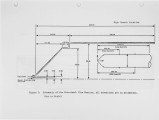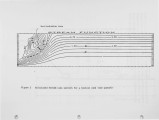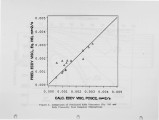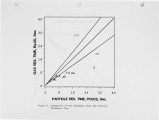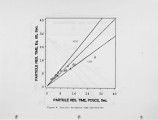| OCR Text |
Show by (10) Here, tp is the particle relaxation time. The dynamic viscosity of the gas was calculated based on the reactor pressure and temperature by proportioning of the secondary and primary flov-' rates. From Eq. (10), it follows (11) The particle nrrbulence Reynolds' number is defined as (12) where r tp is a characteristic turbulent mixing coefficient for the particle. In this study, r tp is taken proportional to (v t >max for the gas flow calculated from computer simulations at a location immediately downstream of the reactor inlet. The rationale for choosing the form of Eq. ( 6) was that the limiting cases would be satisfied. For example, for a stagnant gas (tgr = 00) and zero burnout (be = 0) tpr = to; and for a laminar flow (v t = 0), (U slip = 0) and zero burnout, then tpr = t gr. Strictly speaking, the coefficient A should be a function of reaction temperature and reactor length since the burnout and, hence, the particle size is a strong function of these parameters. In other words, for two cases with different reaction temperatures be may be the same, but for the higher temperature case, burnout may be completed much sooner than in the lower temperature case. For brevity these factors were not included explicitly but were lumped into the correlation coefficients. For determining the turbulent mixing coefficient r tp the following mixing length relation was proposed: r • t p = Const. v t = Const. 1m V (13) -8- |













